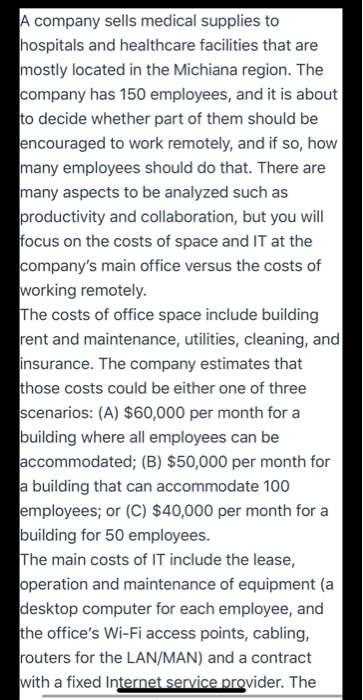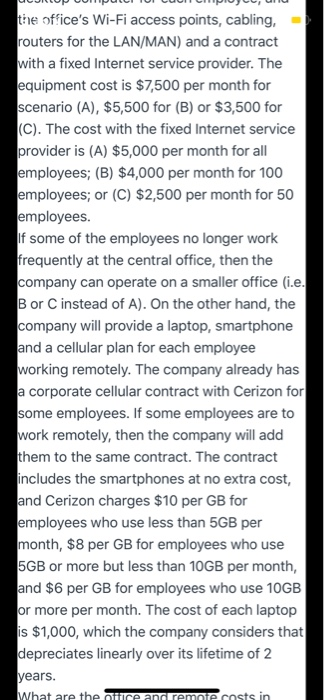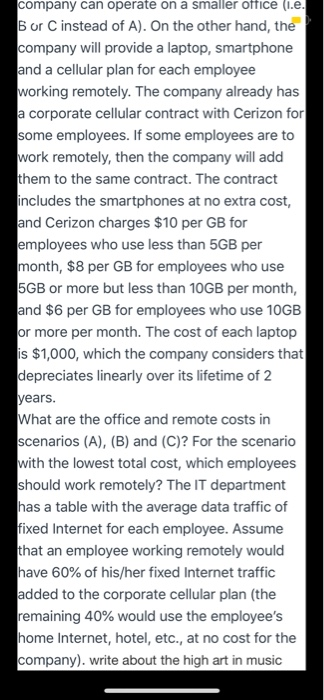Employee GB
1 14
2 19
3 6
4 97
5 49
6 28
7 80
8 90
9 6
10 99
11 41
12 49
13 85
14 30
15 2
16 69
17 9
18 93
19 34
20 12
21 92
22 1
23 31
24 46
25 33
26 97
27 76
28 57
29 88
30 72
31 49
32 91
33 1
34 23
35 60
36 17
37 50
38 29
39 20
40 97
41 65
42 56
43 56
44 64
45 71
46 79
47 5
48 25
49 35
50 24
51 76
52 76
53 5
54 50
55 39
56 2
57 88
58 12
59 37
60 38
61 65
62 29
63 21
64 84
65 38
66 81
67 7
68 28
69 65
70 74
71 14
72 26
73 47
74 24
75 33
76 65
77 70
78 48
79 9
80 16
81 85
82 2
83 91
84 23
85 48
86 8
87 13
88 48
89 88
90 20
91 94
92 83
93 42
94 43
95 65
96 96
97 45
98 17
99 23
100 30
101 60
102 19
103 70
104 95
105 96
106 80
107 55
108 45
109 57
110 63
111 70
112 13
113 81
114 71
115 97
116 77
117 51
118 26
119 20
120 23
121 42
122 3
123 28
124 16
125 1
126 93
127 78
128 28
129 69
130 60
131 10
132 17
133 37
134 47
135 66
136 31
137 22
138 26
139 12
140 42
141 71
142 8
143 68
144 82
145 5
146 25
147 52
148 24
149 77
150 84
A company sells medical supplies to hospitals and healthcare facilities that are mostly located in the Michiana region. The company has 150 employees, and it is about to decide whether part of them should be encouraged to work remotely, and if so, how many employees should do that. There are many aspects to be analyzed such as productivity and collaboration, but you will focus on the costs of space and IT at the company's main office versus the costs of working remotely. The costs of office space include building rent and maintenance, utilities, cleaning, and insurance. The company estimates that those costs could be either one of three scenarios: (A) $60,000 per month for a building where all employees can be accommodated; (B) $50,000 per month for a building that can accommodate 100 employees; or (C) $40,000 per month for a building for 50 employees. The main costs of IT include the lease, operation and maintenance of equipment (a desktop computer for each employee, and the office's Wi-Fi access points, cabling, routers for the LAN/MAN) and a contract with a fixed Internet service provider. The ULJICOP COPULITO CUOI O the office's Wi-Fi access points, cabling, routers for the LAN/MAN) and a contract with a fixed Internet service provider. The equipment cost is $7,500 per month for scenario (A), $5,500 for (B) or $3,500 for (C). The cost with the fixed Internet service provider is (A) $5,000 per month for all employees; (B) $4,000 per month for 100 employees; or (C) $2,500 per month for 50 employees. If some of the employees no longer work frequently at the central office, then the company can operate on a smaller office (i.e. B or C instead of A). On the other hand, the company will provide a laptop, smartphone and a cellular plan for each employee working remotely. The company already has Ja corporate cellular contract with Cerizon for some employees. If some employees are to work remotely, then the company will add them to the same contract. The contract includes the smartphones at no extra cost, and Cerizon charges $10 per GB for employees who use less than 5GB per month, $8 per GB for employees who use 5GB or more but less than 10GB per month, and $6 per GB for employees who use 10GB or more per month. The cost of each laptop is $1,000, which the company considers that depreciates linearly over its lifetime of 2 years. What are the nice and remote costs in company can operate on a smaller office (.e.! bor Cinstead of A). On the other hand, the company will provide a laptop, smartphone and a cellular plan for each employee working remotely. The company already has a corporate cellular contract with Cerizon for some employees. If some employees are to work remotely, then the company will add them to the same contract. The contract includes the smartphones at no extra cost, and Cerizon charges $10 per GB for employees who use less than 5GB per month, $8 per GB for employees who use 5GB or more but less than 10GB per month, and $6 per GB for employees who use 10GB or more per month. The cost of each laptop is $1,000, which the company considers that depreciates linearly over its lifetime of 2 years. What are the office and remote costs in scenarios (A), (B) and (C)? For the scenario with the lowest total cost, which employees should work remotely? The IT department has a table with the average data traffic of fixed Internet for each employee. Assume that an employee working remotely would have 60% of his/her fixed Internet traffic added to the corporate cellular plan (the remaining 40% would use the employee's home Internet, hotel, etc., at no cost for the company), write about the high art in music









